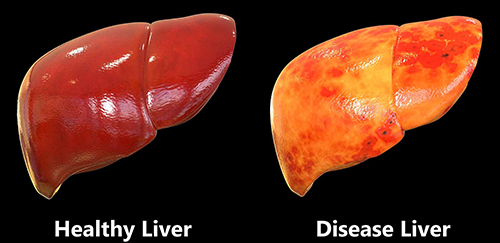What is Fatty Liver Reversal?
Fatty liver reversal refers to the process of reducing or eliminating the accumulation of fat in the liver and improving liver function. Fatty liver disease is a common condition caused by the storage of extra fat in the liver. It is often associated with obesity, insulin resistance, and metabolic syndrome. The good news is that lifestyle changes can often prevent or even reverse fatty liver disease.

Fatty Liver Reversal
One way to reverse fatty liver disease is by losing weight. Even dropping just 5% of your body weight could lower the fat in your liver. Losing between 7% and 10% of your body weight can also lower inflammation and the odds of injury to your liver. A Mediterranean diet, which emphasizes eating primarily plant-based foods and healthy fats, can also help reverse fatty liver disease. Drinking three cups of coffee per day and consuming four tablespoons of olive oil a day are also recommended.
It is important to note that in some cases, fatty liver disease can lead to liver damage. Therefore, it is important to speak with a healthcare provider for personalized advice on how to prevent and reverse fatty liver disease.
Diet for Fatty Liver Reversal
A diet for fatty liver reversal typically includes foods that are low in fat and high in fiber, and which promote weight loss and improved liver function. Some foods are particularly beneficial for fatty liver disease.
Diet is of utmost importance in reversing fatty liver. There are certain types of food that are known to increase fat content in the liver, and avoiding these can help to restore the organ to its pre-diseased state. Reducing the intake of foods with a high glycemic index can help prevent drastic changes in blood glucose levels. Additionally, a liver cleansing diet composed of items such as legumes, poultry, and spinach may be beneficial in detoxifying the organ. L-carnitine, either naturally produced or taken as a supplement, can help the liver to break down the stored fat and convert it to usable energy.
Foods that are high in omega-3 fatty acids, such as cod, salmon, and sardines, can help reduce the risk of non-alcoholic fatty liver disease (NAFLD). Eating a variety of fruits and vegetables is also important, as they are high in fiber and nutrients. Some good options include broccoli, peas, sweet potatoes, and other colourful vegetables. Legumes and whole grains are also high-fibre plant sources that can be beneficial for fatty liver disease.
The Mediterranean diet is a diet pattern that has been shown to improve liver function and reduce the risk of fatty liver disease. This diet emphasizes eating primarily plant-based foods and healthy fats, such as olive oil, nuts, and seeds, while reducing intake of red meat, processed foods, and added sugars.
Overall, a healthy and balanced diet that includes plenty of fruits, vegetables, whole grains, and lean protein sources, and which limits intake of processed foods, added sugars, and saturated fats, can be beneficial for reversing fatty liver disease. However, it is important to speak with a healthcare provider or a registered dietitian for personalized dietary advice and guidance.
Fatty Liver Diagnosis
Being diagnosed with fatty liver can be worrying, but it is a blessing that it has been identified sooner rather than later as the liver is more receptive to any attempt to reverse the condition. If left alone, fatty liver can cause hepatitis, inflammation, scarring, cirrhosis, and eventually lead to liver failure and death. Therefore, it is essential to reverse the fatty liver when it is discovered in order to maintain the proper function of the organ.
Fatty liver diagnosis involves a thorough medical history, physical examination, and one or more tests. A doctor may suspect fatty liver disease if there are symptoms such as fatigue, abdominal discomfort, and enlarged liver. There are various tests used to diagnose fatty liver disease, as described below.
Blood tests can be done to evaluate liver function and check for chronic viral hepatitis, celiac disease, and diabetes. Liver function tests are a group of blood tests that can identify liver disease. The tests include a complete blood count, liver enzyme and liver function tests, fasting blood sugar, and hemoglobin A1C to measure blood sugar stability.
Imaging tests can also help diagnose fatty liver disease. An ultrasound, CT scan, or MRI can show liver damage. These tests can help determine the severity of the disease and rule out other conditions with similar symptoms. Additionally, a tissue sample may e taken for analysis.
In conclusion, to diagnose fatty liver disease, doctors use a combination of medical history, physical examination, blood tests, and imaging tests. The tests can help determine the severity of the disease and rule out other conditions with similar symptoms. If you suspect you have fatty liver disease, consult your doctor for proper diagnosis and treatment.
